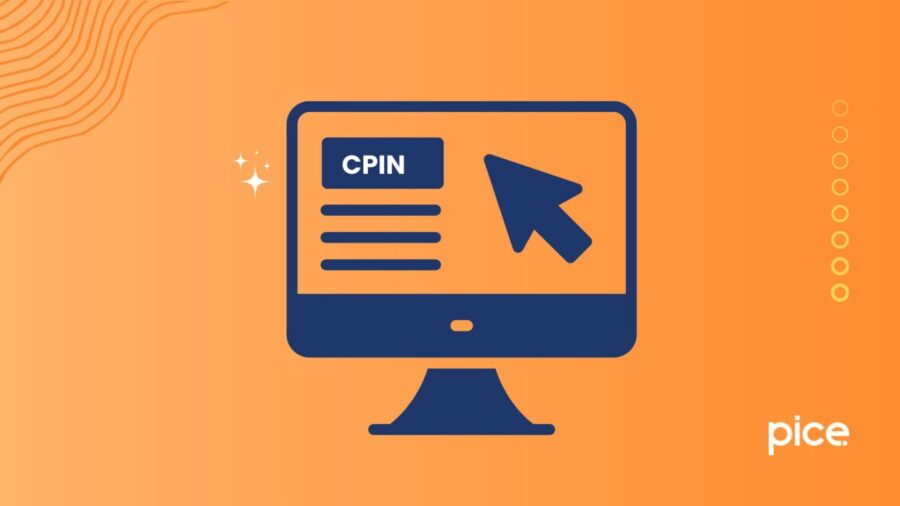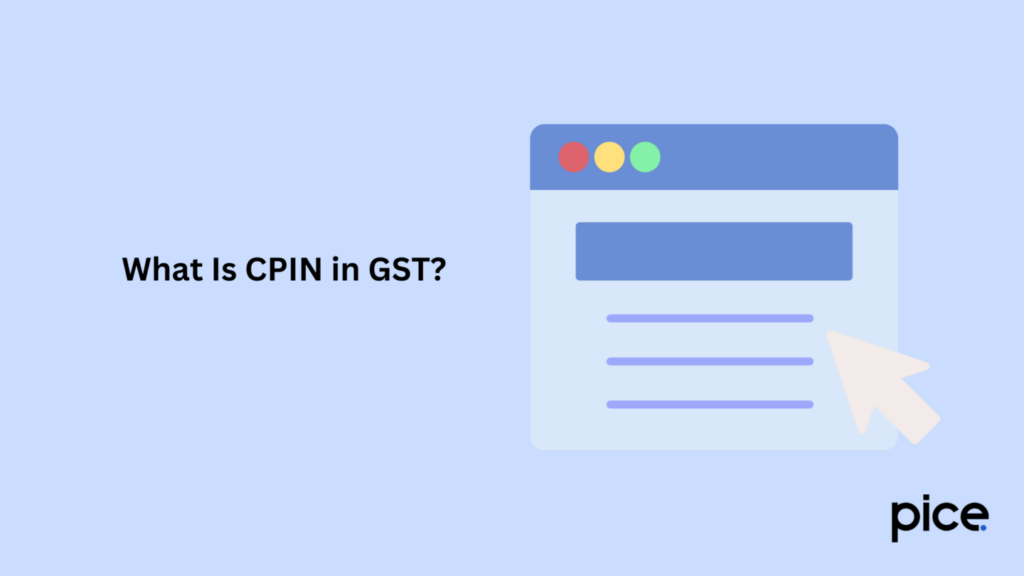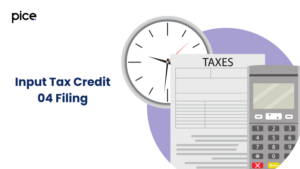How Does CPIN Work Under the GST Tax System in India?
- 20 Sep 24
- 8 mins

How Does CPIN Work Under the GST Tax System in India?
Key Takeaways
- CPIN is a unique 14-digit number generated while creating a fresh GST challan, crucial for tracking tax payments.
- Validity of CPIN is 15 days, and taxpayers must complete payments within this period to avoid penalties.
- CPIN vs CIN: CPIN is part of the 17-digit CIN, which is created after payment submission along with the bank code.
- Track GST Payments using the CPIN on the GST portal, either with or without logging in for convenience.
- Failed Payments can be resolved by generating a new CPIN and contacting the bank or GST helpdesk for further assistance.
In 2017, the Government of India introduced the Goods and Services Tax (GST) system to simplify the country's indirect tax system. The goal was to make it easier for businesses to handle their tax responsibilities. One important part of this system is the Common Portal Identification Number (CPIN).
Businesses must know what is CPIN in GST and how it helps track their tax challan payments accurately. Let us take a closer look at what is CPIN in GST.
What Is CPIN in GST?

CPIN is a unique 14-digit Common Portal Identification Number. It is issued while creating a fresh GST challan online. Generally, taxpayers have an option to temporarily save an online GST tax challan and make edits before finalising it. After reviewing and submission of the challan, the GST Portal generates a 17-digit unique identity number.
This number is CIN or Challan Identification Number. Every CIN is a 17-digit unique code. It comprises of 14-digit CPIN number along with a 3-digit Bank Code. CPIN & CIN are both essential in the GST payment facility.
Detailed Step by Step Guide to Check GST Payment Status Online Before Logging
To track the status of a GST payment, without logging into the GST Portal, perform the following steps:
Step 1: Go to the GST portal. The GST homepage will be displayed. Go to 'Track Payment Status'.
Step 2: On the homepage, locate the ‘Services’ menu. Under the 'Services' tab, click on payment button and then 'Track Payment Status'. This will take you to the payment status tracking page.
Step 3: In the ‘Enter GSTIN/Other ID’ field, type in your GSTIN (Goods and Services Taxpayer Identification Number) or another applicable ID.
Step 4: Enter the CPIN that was generated during your online GST payments process. Enter the captcha text exactly as it appears.
Step 5: Click on 'Track Status'. The GST portal will display the current GST payment status. To view the challan details, click on the ‘VIEW CHALLAN’ button.
Detailed Step by Step Guide to Check GST Payment Status Online After Logging
If you prefer to track your GST payment status after logging into the GST portal, follow these steps:
Step 1: Use your GSTIN and password to log in.
Step 2: Go to 'Services', then select payment button and click on 'Challan History Option'.
The payment status is displayed in a list of challans. The default display shows the latest 10 challans in chronological order.
Step 3: Search by CPIN or by date to track the payment of the challan.
Step 5: Select the ‘CPIN (Common Portal Identification Number)’ link to view the payment receipt or challan.
Step 6: The receipt is available only for challans with a paid status. You can download the receipt by clicking the ‘DOWNLOAD’ button.
Steps to Follow if GST Payment Fails
Sometimes, GST payments may fail due to various reasons like network issues, banking errors, or incorrect details. Here's what you should do if your GST payment fails:
Step 1: Check for Errors: Verify if there were any errors during the payment process, such as incorrect details of payment or network issues.
Step 2: Check Payment Status: Use the 'Track Payment Status' feature on the GST portal to see if the electronic payment went through.
Step 3: Contact Your Bank: If the payment still shows as failed, contact your authorized bank to ensure that the amount has not been debited.
Step 4: Generate a New GST Challan: If the payment is confirmed as failed, you need to generate a digital challan with a new CPIN and make the payment again filling each major head in either modes of payment.
Step 5: Seek Help from the GST Helpdesk: If you face continuous issues, you can contact the GST helpdesk for assistance.
Frequently Encountered Challenges in Online GST Payment
Here are some of the common challenges you may face while paying GST in the online mode of payment:
- Network Problems: Slow or unreliable internet connections may interfere with online mode of payment. You should have a stable connection before you can make vendor payments.
- Banking Errors: Sometimes, there are issues from the digital banking services side like transaction timeouts or server errors. In case you experience such problems, contact your authorised bank.
- Incorrect details: Filling wrong details (such as, GSTIN or amount) may result in unsuccessful payments. Cross-check all information before submitting the payment and avoid erroneous challans.
- Payment Gateway Errors: Such issues may also be caused by an error in the payment modes or payment services and often show an GST challan error. If this happens get help from the GST helpdesk or you can consider other modes of payment like offline payment services for payment of taxes.
Importance of CPIN in GST Payments
Here are some of the reasons why CPIN is important for the process of making an online GST payment:
- Tracking Payments: Accurate tracking of GST payments by both taxpayers and authorities is done through CPIN. This ensures that the process is transparent and accountable and minimises the chance of an incorrect challan, payment mode or payment failures.
- Preventing Multiple Payments: Since no two CPINs are identical, they prevent any chance for duplicate payments. Taxpayers can confirm their transactions using this number easily for generating challans.
- Audit Trail: Clearly defined audit trail for GST payments is critical for documentation purposes as well as future reference. However, this is applicable to online challans only.
Understanding the Validity of CPIN
A CPIN is valid for approximately 15 days from its date of issuance. This implies that the taxpayer makes a successful payment within this duration.
The CPIN expires when the payment has not been made within the validity period. In case it happens, a new one should be generated by the taxpayer to make vendor payment and utility payments.
Meeting payment deadlines within the approved and current period on an issued CPIN saves taxpayers from paying penalties for late payment of taxes and interest charges applied thereto from authorized bank.
Conclusion
CPIN (Common Portal Identification Number) forms a crucial part of the GST payment process. It assists taxpayers in keeping records about their remittances, ensuring smooth fulfilment of tax challan liabilities.
Clarifying what is CPIN in GST is crucial for anyone involved in making or tracking GST payments.
💡If you want to pay your GST with Credit Card, then download Pice Business Payment App. Pice is the one stop app for paying all your business expenses.
 By
By 


















